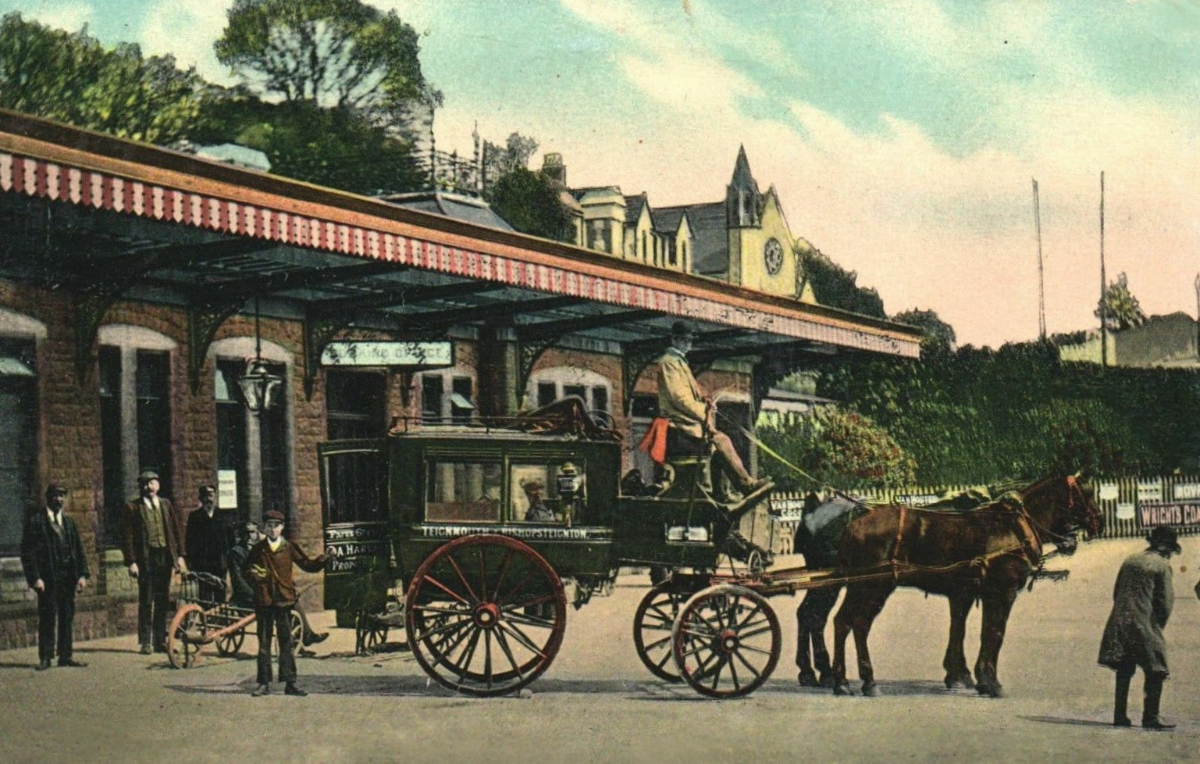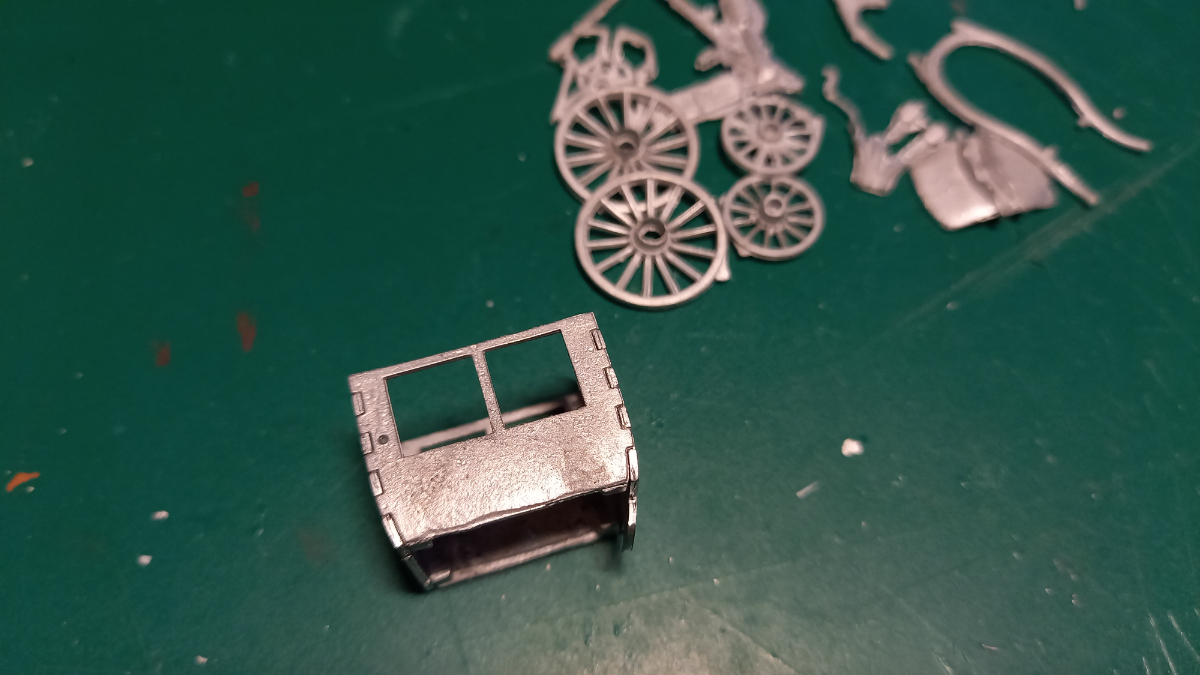I’ve built a GWR horse-drawn station bus using a modified and detailed P&D Marsh kit.
A colourized postcard showing omnibuses in the station forecourt at Minehead. A perusal of period photos suggests that the outside seating wasn’t necessarily the last choice option – on sunny days at least!
The forecourt at Teignmouth. Lettering on the door shows the fare and “A. Harvey (?), Proprietor”. Many horse-drawn station bus services were operated by individual entrepreneurs, nearby fashionable hotels, or local agents for the railway companies. Actual GWR-owned station buses certainly existed but were, I suspect, a minority.
Old and new at Helston. The GWR’s first motor-driven road service was introduced at Helston in 1903, signalling the beginning of the end for horsedrawn omnibuses. The horse-drawn bus on the right served a local hotel.
Phillip Kelley’s two volumes on GWR road vehicles feature a small but useful selection of photo and drawings of GWR horsedrawn buses. Online, a couple of rather interesting GWR omnibuses can be found here (scroll down). An agent-operated GWR service can be seen on the Fairford pages here. For non-GWR omnibuses, Gail Thornton’s website is interesting.
The P&D Marsh kit is a fairly simple affair but does represent an actual prototype built by the GWR in 1894. There's a Swindon drawing of it in Kelley’s “Great Western Road Vehicles Appendix”. Towards the end of the build I realised that I had overlooked an actual photo of the vehicle in Kelley’s main volume (“Great Western Road Vehicles” p.29).
Assembly of the body leaves you with somewhat unsightly corners.
Repeated applications of filler and sanding helped, followed by primer.
The basic components result in a reasonable overall representation of the original vehicle.
Bringing it to this stage was a fairly quick exercise, but I decided to add some detailing.
First step was some simple seating and glazing. The interior may or may not have been more lavish, but with the roof on very little is visible.
The kit’s roof casting is rather thick and does not reflect the pattern on the prototype. A replacement was made by laminating two layers of thin styrene, the top layer being a grid pattern drawn up in Inkscape and printed on my Silhouette.
This was fixed with superglue, with temporary holes to allow the fumes to escape so they don’t frost the glazing.
Luggage rails were fitted using 0.5 mm straight brass wire. Later I removed the front rail, as I discovered that the prototype didn’t have it. Same thing can be seen on some other omnibuses. Forward-sliding luggage not a problem on slow-breaking vehicles?
The drawing and photo show what initially looks like a ladder at the rear. Closer inspection shows it to be three vertical rails with no apparent rungs. My best guess is that they are guard-/guiderails for raising and lowering heavy luggage to and from the roof without damaging the sides. Anyway, I fitted them using more brass wire. Also seen is the rear passenger step. The one provided in the kit is rather crude and doesn't match the drawing, so I made a simple replacement. The step could be folded down and away for stowage during transport.
Discovery of the prototype photo led to some unpleasant surprises. I had overlooked horisontal bolections along the sides and ends, so they were retrofitted using thin wire. There are also what looks like ventilation louvres above the windows (or rainstrips?), these were indicated using thin strips of styrene.
I fashioned a pair of coach lamps using old loco lamps from the scrap box, fitted with bits from my tin of watchmakers’ spares. No particular prototype, just a nod to a certain type seen in some photos.
Lettering and insignia will have to wait. The prototype photo shows the vehicle in factory finish in 1894, with sans-serif “Great Western Railway” below the windows in quite a small font size (smaller than on goods cartage vehicles), and a simplified garter behind the wheels. My printer can’t do such small lettering to a satisfying standard, so I’ll leave it unlettered until I find one that can.
The bus will be parked in the station forecourt at Farthing, with passengers outside. So I decided to add some luggage. The prototype photo shows leather straps (or similar) fitted to the luggage rails, so I painted some thin masking tape to imitate this.
I'm not sure about the principles for how luggage was packed on omnibus rooves. Photos suggest pragmatic solutions.
I replaced the horse in the kit. I first painted up the mare on the left, but decided it was more of a goods type. So an exchange was made with the pretentious type on the right. Both are from Dart Castings.
I normally go with matt varnish for my horse-drawn vehicles, but couldn't resist a satin finish in this case.
I'm pondering my choice of driver. Current offerings aren't that good, so will probably modify a seated passenger. No reins, too impractical with my current layout arrangements.
So that's yet another horse-drawn vehicle for Farthing. Good thing I've got a big stable block :) There are plans afoot for an early motor bus, but that's another story.























